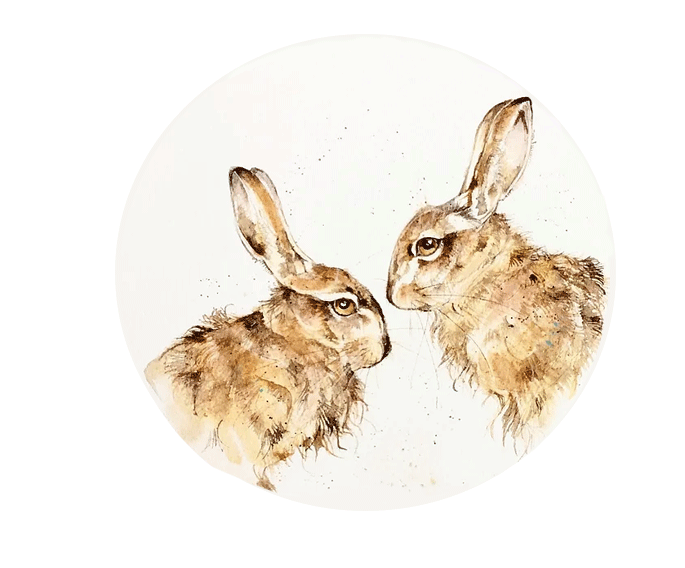The European Brown Hare (Lepus Europeaus)
- Kate Wyatt

- Nov 16, 2016
- 3 min read

Why do I feel so passionate about drawing and painting the brown hare? Well I am actually passionate about all British wildlife, and like to show this in all my art. Many people who either collect my work or come in to my studio to talk to me about my work often ask 'why hares?' In fact it's a question which my family also often ask ..! I don't recall seeing many brown hares when I was younger, my Dad often spoke about them, but my fascination with them began when I started to go out wildlife watching in Britain and noticed this magnificent creature suddenly taking off and running so fast that I couldn't believe it, I also couldn't understand why I hadn't noticed them before as they were much bigger than I imagined. This became a challenge to see as many as possible, to make studies from life however bad at first, to watch wildlife films about them, and slowly I began to realise that although many people see them not many people understand their strange habits or their lifestyle and the fascination of some of the legends which surround them began to slowly take a hold of my imagination. I knew I wouldn’t be content until I got out there and drew as many from life as possible - the best times to watch the activities of hares is either very early in the morning or towards the evening as the sun begins to set, although if I want to draw one which is keeping still, the afternoon is good too. So began my long journey towards learning how to draw and eventually paint the brown hare. I did take some of my hare sketches to the Society of Wildlife Artists and spoke to the president who was very complimentary about my work and emphasised the need to work from life. I was thrilled when my work was chosen to be exhibited in the Royal Society of Art (West of England) two years running, my first big break, and the work was next to HRH Prince Charles, the Prince of Wales. Also my work was selected two years running and hung at the very prestigious Mall Galleries in London as part of the Society for Women Artists. This constant search for hares always involves long and often muddy walks to the locations where I had seen hares (although this is not always a guarantee as they seem to move from a site where they had been seen) and sitting very quietly at the edge of the field with my back to the hedgerow, I try whenever possible to get as close as I can, some hares seem quite patient with this, others just up tail and run, the back view being a square bottom and an indigo tail down. I like to work for several hours and also draw the habitat surrounding the hares, being curious I like to know what they are finding to eat, they seem to like kale and corn. I have noticed them in sweet corn fields as well. The best seasons to note the brown hare is usually winter, spring and autumn, in summer the harvest is usually too high. I use binoculars and a scope, I do take photographs and film them which helps in the final pieces of work. Their eyes and ears are so huge, I can forget this each time until I see them again. Their ears swivel round and take on a life of their own. I am also lucky enough to have been invited to work on the wildlife residents of the local wildlife rescue centre, a beautiful tawny owl, some very young foxes and two wonderful leverets of about six weeks old. (I nearly cut my holiday short in Dorset when I discovered that the wildlife hospital had two leverets too good an opportunity to miss.
#Hare #HARES #Hares #Bunny #Watercolour #WatercolourpaintingHare #ArtHare #SculptureHare #PenandInk #PenandInkandWatercolourWilldlife #WildlifeHares #WildlifeArt #BritishWildlifeArt #LongEarHares #HareWatching #HarePreservation #WildlifeRescueCentre #buckinghamshirewildlifeartist #artinbuckingham #artistinbuckingham #wildlifeartinbuckingham #animalartistbuckingham #katewyattwildlifeart #katewyattart #katewyattartist #katewyatthares #katewyattbrownhares #katewyattmountainhares #BBC #Countryfiletvprogramme #Countryfiletv #BBCCountryfile #Countryfilebbc #Countryfilebbcandkatewyatt #katewyattandcountryhotels #bbccountryfile #CountryfileandbuckinghamshirewildlifeartistKa #Countryfileprogramme #CountryfileSteveBrownandKateWyatt #katewyattandCountryfile #Countryfile #CountryfileandKateWyatt








Comments